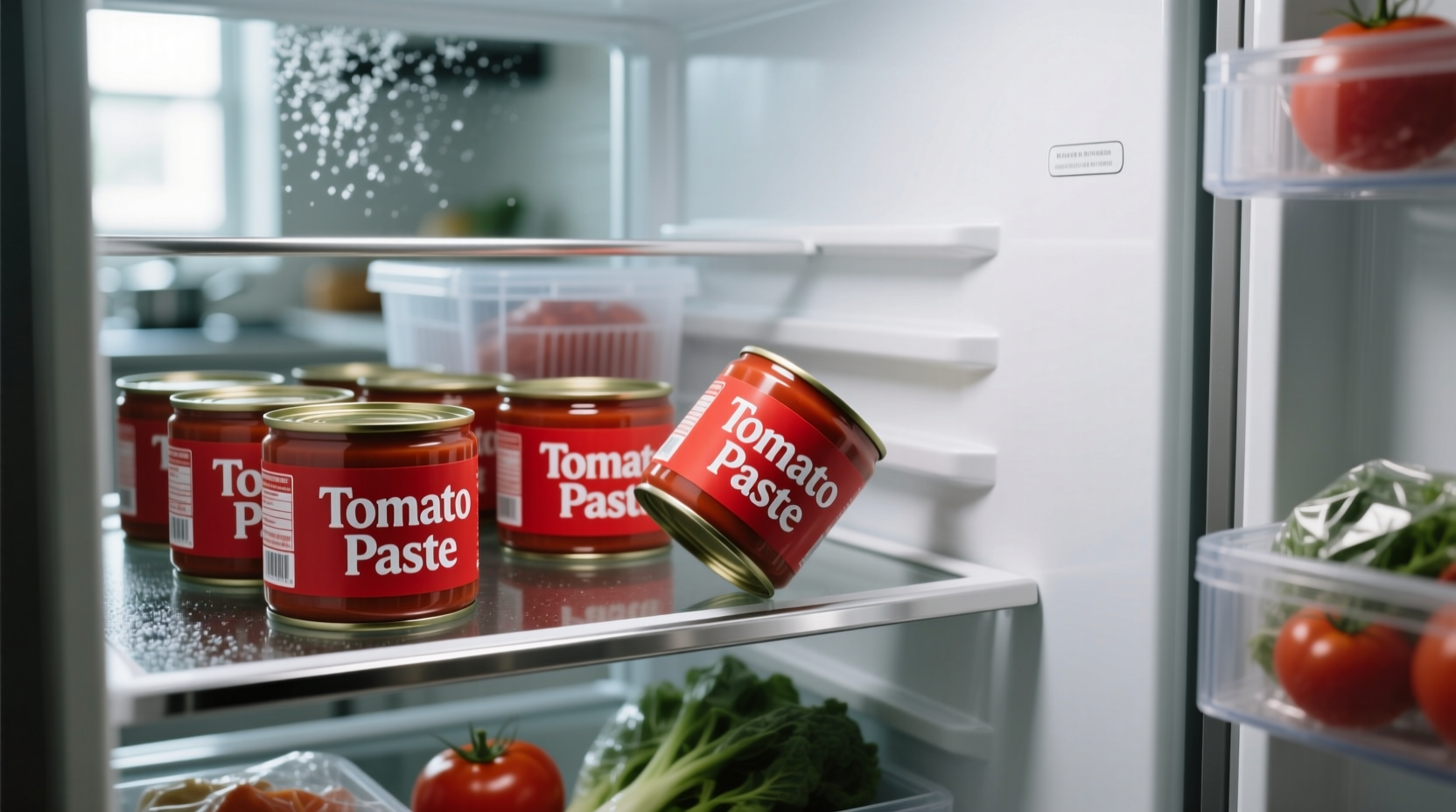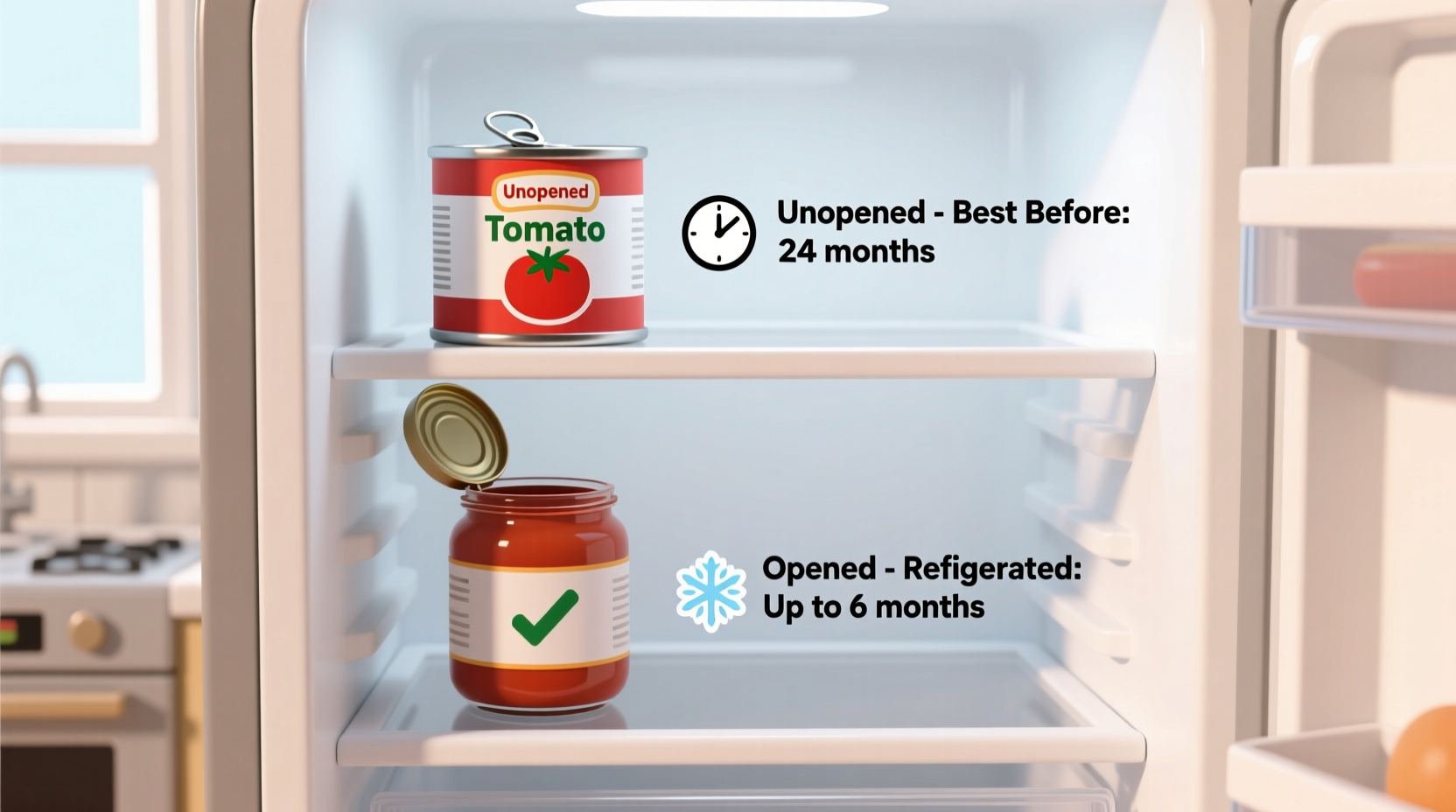Discovering half-used tomato paste in your fridge can trigger that urgent question: Is this still safe to eat? As someone who's worked with professional kitchens and home cooks for over 15 years, I've seen how often this pantry staple gets misjudged. Proper storage isn't just about preventing food waste—it's critical for avoiding foodborne illness. Let's cut through the confusion with science-backed guidance you can trust.
Understanding Tomato Paste Shelf Life Science
Tomato paste undergoes concentration through cooking, which reduces water content and creates a more acidic environment (pH 4.1-4.6). This natural acidity provides some preservation benefits, but once exposed to air and refrigerator temperatures, microbial growth becomes inevitable. The USDA Food Safety and Inspection Service confirms that opened tomato products require refrigeration and have limited shelf life due to potential mold and yeast development.
| Storage Method | Unopened Shelf Life | Opened Shelf Life | Optimal Temperature |
|---|---|---|---|
| Canned (original container) | 12-18 months | 5-7 days | ≤40°F (4°C) |
| Transferred to airtight container | N/A | 7-10 days | ≤40°F (4°C) |
| Freezer (ice cube tray method) | N/A | 6-8 months | 0°F (-18°C) |
How to Check If Your Tomato Paste Has Spoiled
Don't rely solely on the calendar—your senses provide the most reliable indicators. Follow this progressive inspection method:
- Visual inspection (days 1-3): Check for any mold growth, especially around the container edges. Discard immediately if you see white, green, or black spots.
- Smell test (days 3-5): Fresh tomato paste has a bright, acidic aroma. If you detect sourness beyond normal acidity or any fermented notes, it's time to discard.
- Texture check (days 5-7): Properly stored paste maintains a thick, uniform consistency. Separation is normal, but slimy texture or bubbling indicates spoilage.
- Taste verification (only if previous checks pass): Take a tiny taste—if anything seems "off" beyond normal tomato flavor, discard immediately.

Maximizing Freshness: Pro Storage Techniques
Professional kitchens use these methods to extend tomato paste usability without compromising safety:
- Immediate transfer: Never store opened paste in the original can. Transfer to glass or BPA-free plastic containers within 30 minutes of opening.
- Air elimination: Press plastic wrap directly onto the paste surface before sealing the container to minimize oxygen exposure.
- Temperature consistency: Store in the main refrigerator compartment (not the door), where temperatures remain most stable. The FDA Food Code specifies that refrigerated foods should maintain temperatures below 41°F (5°C) to prevent pathogen growth.
- Batch freezing: Freeze in 2-tablespoon portions using ice cube trays, then transfer to freezer bags. This preserves quality for 6-8 months while allowing precise portioning.
Common Misconceptions About Tomato Paste Storage
Several widespread beliefs actually compromise food safety:
- "The can protects it": Metal cans continue to react with acidic contents after opening, potentially causing metallic flavors and container degradation.
- "No mold means it's safe": Harmful bacteria like Salmonella and E. coli can grow without visible indicators, according to FoodSafety.gov's storage guidelines.
- "I can just scrape off the mold": Mold roots penetrate deeper than visible growth, making the entire container unsafe regardless of surface appearance.
When Shelf Life Varies: Critical Context Factors
Several conditions affect how long your tomato paste remains safe:
- Refrigerator temperature fluctuations: If your fridge regularly exceeds 40°F (4°C), reduce expected shelf life by 2-3 days
- Added ingredients: Paste mixed with oil, garlic, or herbs reduces shelf life to 3-4 days due to additional moisture and organic matter
- Container material: Glass containers extend usability by 1-2 days compared to plastic due to better barrier properties
- Initial product quality: Higher quality pastes with fewer additives typically maintain freshness longer than budget options
Practical Usage Timeline for Home Cooks
Follow this actionable schedule based on when you opened the container:
- Day 1: Transfer to airtight container, label with opening date
- Days 2-3: Ideal for sauces requiring long simmering (bolognese, stews)
- Days 4-5: Best for quick-cook applications (pizza sauce, shakshuka)
- Days 6-7: Use only in thoroughly cooked dishes reaching 165°F (74°C)
- Day 8+: Discard regardless of appearance—hidden pathogens may be present











 浙公网安备
33010002000092号
浙公网安备
33010002000092号 浙B2-20120091-4
浙B2-20120091-4